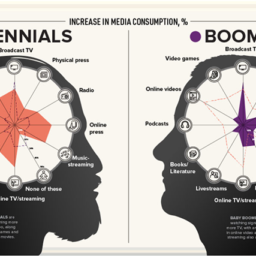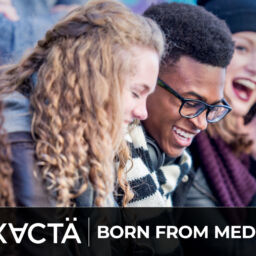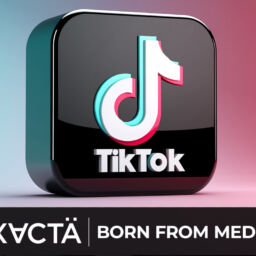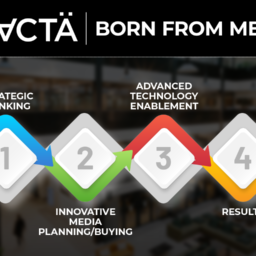
The number of people listening to podcasts is skyrocketing. According to eMarketer, it’s the fastest growing form of digital audio in America. In fact, by next year it is projected that adults will spend more time listening to digital audio than to traditional broadcast radio, including podcasts. On top of the projected growth, podcasts reach 51 percent of US audiences ages 12 and up as noted on TechCrunch. With a shift toward digital audio already at full speed and as podcasts continue to grow as a content source, the way brands utilize their airtime on this platform is still being shaped. So, what does the future hold for advertising on podcasts?
Ad-Supported vs. Subscription
As with other digital audio content, the two most popular ways to monetize podcasts is for hosts to be ad-supported or charge listeners a subscription fee. We’ve seen this before with music streaming services such as Pandora or Spotify. The free version is ad-supported, meaning ads are played for listeners and are unskippable just like on radio. Or, listeners can choose to pay for the service via a subscription fee and access content with no commercial breaks. Podcasts look to be traveling the same path. Some choose to ask for a subscription and others offer content at no charge but with commercial breaks. Since this has already been a proven tactic for serving content, there’s no reason that podcasts can’t continue to grow in this manner. Sometimes the same podcast will offer the two different options, diversifying their income and allowing listeners to choose the best fit for their consumption habits.
TechCrunch recently posted an article which described a situation involving a company called Luminary. Luminary launched a service similar to Netflix, where consumers pay a monthly fee to get Luminary-exclusive podcasts along with podcasts that are free on apps such as Spotify or iTunes. The issue here was that Luminary was grabbing these free podcasts, putting them behind their paywall and then collecting the fee, without any of the revenue getting back to the creators. This obviously didn’t go over well, and creators requested their content be removed from Luminary’s service. While basically stealing free content and putting it behind a paywall is absolutely the wrong way to go, services like this but that provide proper compensation to creators could become part of the subscription-based podcast model.
Podcasters as Influencers
Listeners select podcasts that speak to their interests and entertainment preferences. Just like choosing who to follow on social media, so do listeners choose which podcasts to give their time and attention. Because of this, listeners often have a unique relationship with the podcast host(s) and view them as a trusted source of information. Because of this relationship, host-read advertising that has been scripted and read by the host and integrated into the podcast when they feel is appropriate works the best. Midroll notes that these types of placements produce 4.4 times better brand recall than traditional display, scroll or pop-up ads. That’s huge! Hosts have become influencers and could potentially be viewed as brand ambassadors. Despite the overwhelming success of host created and read placements, eMarketer showed the number of brand-supplied and pre-produced ads grew from 2017 to 2018, and continues to grow.
As more and more brands explore advertising opportunities on podcasts, it would make the most sense for them to allow the host to take on the role of influencer and create and read the advertising as opposed to providing their own pre-produced creative. However, it’s unclear at this time if we’ll see the trend of increased pre-produced ads continue to rise, slow or reverse.
The Question of Attribution
Once you’ve decided to purchase podcast advertising for your brand, how will you be able to track ROI? Unless your brand is engaging in a blanketed brand awareness campaign, chances are you’ll want to be able to show that the podcast placement is garnering results. Traditional forms of tracking direct marketing such as promo codes, vanity phone numbers and URLs are a popular way to complete attribution at this time, but what about in the future?
TechCrunch notes that some companies are trying to help with podcast attribution by creating ad marketplaces and specialized tactics to track performance. The article references an attribution company called Chartable which tracks listener and purchaser IP address to then make the connection for those listeners that fail to use the vanity URL or promo code so that the podcast can get credit for that purchase. Combined solutions such as this type of tracking, updated ad marketplaces and tried and true vanity CTAs look to be the way forward.
Hear the Future
With podcast listener viewership on the rise the future of advertising on podcasts looks bright. The hope from inside the industry is that host-read advertising prevails, keeping the special connection between creator and listener with tailored content while sidestepping the jarring experience of having to run pre-produced and supplied programmatic style advertising. With new ad marketplaces and tracking being developed, it’s clear that podcast advertising will become more mainstream, attracting large and small companies alike.









